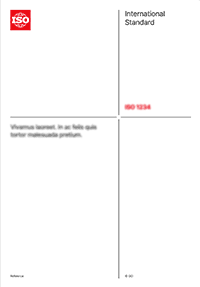Тезис
Statistical process control (SPC) concerns the use of statistical techniques and statistical or stochastic control algorithms to achieve one or more of the following objectives:
a) to increase knowledge about a process;
b) to steer a process to behave in the desired way;
c) to reduce variation of final-product parameters, or in other ways to improve performance of a process.
These guidelines give the elements for implementing an SPC system to achieve these objectives. The common economic objective of statistical process control is to increase good process outputs produced for a given amount of resource inputs.
NOTE 1 SPC operates most efficiently by controlling variation of a process parameter or an in-process product parameter that is correlated with a final-product parameter or by increasing the process’s robustness against this variation. A supplier’s final-product parameter may be a process parameter to the next downstream supplier’s process.
NOTE 2 Although SPC is concerned with manufactured goods, it is also applicable to processes producing services or transactions (for example, those involving data, communications, software, or movement of materials).
This part of ISO 11462 specifies SPC system guidelines for use
- when a supplier's capability to reduce variation in processes associated with design or production needs to be proven or improved; or
- when a supplier is beginning SPC implementation to achieve such capability.
This part of ISO 11462 considers the complete industrial supply chain. It describes some essential statistical methods that can be used to continuously improve capability or performance and stability of production processes.
The bottom line is that production processes are controlled economically, promptly and effectively. As a result, a predefined level of quality can be realised. The improvement of stability and performance or capability of the production processes effectively reduces waste and machine downtime or increases productivity. If defective production parts are found in a random sample, they can be sorted out and, if necessary, further measures can be initiated.
Общая информация
-
Текущий статус: В стадии разработкиЭтап: Проект комитета принят для регистрации в качестве проекта международного стандарта [30.99]
-
Версия: 2
-
Технический комитет :ISO/TC 69/SC 4ICS :03.120.30
- RSS обновления
Жизненный цикл
-
Ранее
ОпубликованоISO 11462-1:2001
ОпубликованоISO 11462-2:2010
-
Сейчас
-
00
Предварительная стадия
-
10
Стадия, связанная с внесением предложения
-
20
Подготовительная стадия
-
30
Стадия, связанная с подготовкой проекта комитета
-
40
Стадия, связанная с рассмотрением проекта международного стандарта
-
50
Стадия, на которой осуществляется принятие стандарта
-
60
Стадия, на которой осуществляется публикация
-
90
Стадия пересмотра
-
95
Стадия, на которой осуществляется отмена стандарта
-
00

